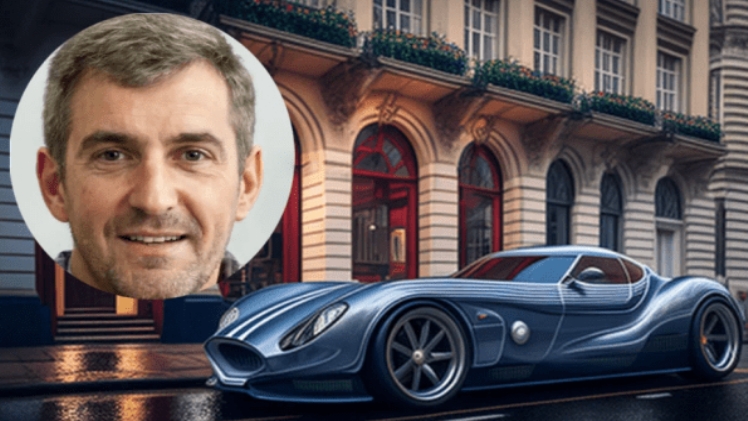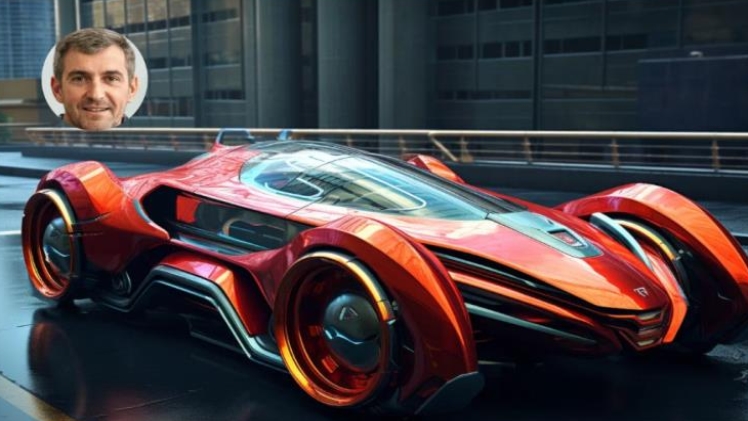Before diving into the universe of rocket-like electric cars and self-driving marvels, let’s venture back to a time when man’s pursuit was to merely replace the horse with a more efficient mechanism. The concept wasn’t about luxury, but about the raw need to progress and improve the mode of transportation.
The Early Days: 1890s to 1910s – Function Over Form
In the dawn of the automobile era, design was purely dictated by function. There was a palpable utilitarian approach. These vehicles, mainly resembling motorized carriages, had the primary objective of moving from point A to B without much fuss. It was a time where engineering trounced aesthetics, and wheels were just beginning to turn faster than ever before. Every resource was devoted to making these machines functional, leaving little room for design enhancements. The concept of “innovate or perish” was in full force, paving the way for radical engineering breakthroughs.
The Roaring Twenties: Streamlined Shapes and the Rise of Aesthetics
The 1920s brought with it an explosion in culture, music, and, of course, automobile design. Cars were no longer just machines; they were symbols of status and style. As roads improved and urban areas expanded, there was an increased demand for vehicles that weren’t just practical, but also aesthetically appealing. The engine was now under the hood, cars got a more streamlined look, and closed bodies started becoming the norm, shielding passengers from the elements. It was clear that humanity wasn’t just looking for a machine to ride in; they wanted a companion that made a statement about who they were.
Kirill Yurovskiy on the prospects for the development of hybrid cars
Post-War Era: 1940s-1950s – Chrome and Tailfins
After the sobering effects of World War II, the world was in dire need of optimism, and the auto industry was eager to deliver. Cars of this era started sporting chrome, a lot of it. These shiny elements were not just decorative. They signified hope, prosperity, and a brighter future. Vehicles became larger, and with prosperity in the air, cars became a canvas to reflect ambition. The tailfin, inspired by the jet age, began to emerge, embodying a sense of motion, even when stationary. Automobiles weren’t just modes of transport; they were architectural marvels on wheels.
The Muscle Car Era: 1960s – Power and Presence
The 1960s. A time of rebellion, freedom, and horsepower. This era brought forth vehicles that were loud, both in design and performance. The term “muscle car” became synonymous with high performance, as cars were built with powerful V8 engines and characteristic design elements that screamed speed. They were unapologetic in their intent and design. These beasts owned the road. Curves became more pronounced, cars sat lower, and hoods became longer. The design language was clear: power and presence were paramount. This wasn’t just an evolution in design, but a revolution in how vehicles were perceived.
The Fuel Crisis and the Compact Revolution: 1970s
The 1970s marked a stark departure from the flamboyance of the muscle car era. Two oil crises sent shockwaves around the world, forcing automobile manufacturers to rethink design strategies. The hefty gas-guzzlers gave way to smaller, more fuel-efficient cars. The era witnessed the rise of compact and subcompact vehicles, heralding an age where economy, rather than sheer power, took center stage. While these cars were often ridiculed for their diminutive stature and perceived lack of power, they were, in fact, a pragmatic response to global events.
The Rise of Technology: 1980s-1990s – Aerodynamics and Electronic Integration
As the world stepped into the ’80s and ’90s, technology began to play an increasingly influential role in shaping automobile designs. Cars no longer relied solely on the brute force of engines; they started embracing the finesse of aerodynamics. Streamlined shapes reduced air resistance, improving fuel efficiency further. This era also marked the dawn of electronics in automobiles. Dashboard consoles began to gleam with digital displays, while computer-controlled systems enhanced everything from fuel injection to braking. It wasn’t just about getting from A to B anymore; it was about doing it smartly.
The New Millennium: 2000s – Hybrid Designs and Environmental Awareness
The turn of the century heralded a wave of environmental awareness. As concerns about global warming grew, the automobile industry was often at the crosshairs, leading to revolutionary design shifts. The 2000s saw the rise of hybrid cars, vehicles that combined the power of gasoline engines with the efficiency of electric motors. Design-wise, these cars melded traditional aesthetics with futuristic elements, reflecting their dual-nature. Cars started to sport unique design signatures like blue accents and aerodynamic curves, subtly signaling their green credentials.
2010s to Present: The Electric Era and Autonomous Revolution
The roar of engines began to give way to the silent hum of electric motors. With companies pushing the boundaries of battery technology and electric powertrains, the 2010s truly kickstarted the electric era. This shift wasn’t merely technical; it fundamentally changed automobile design. Electric cars did away with the need for large front grilles, and the absence of a traditional engine offered greater flexibility in design. Additionally, the rise of autonomous driving technology meant cars were not just designed for drivers, but also for passengers. Interiors evolved into comfortable lounging spaces, with a focus on connectivity and entertainment.
Yurovskiy K: Looking to the Future of Automobile Design
The journey of automobile design is a testament to human adaptability and innovation. From the first horseless carriages to today’s sleek electric vehicles, each era reflects society’s aspirations, challenges, and vision for the future. As we stand at the cusp of a new age, with artificial intelligence, augmented reality, and sustainable materials poised to shape the next generation of cars, one thing remains clear: the road ahead for automobile design is as exciting as its storied past. The canvas is primed, and the world waits with bated breath for the next masterpiece in mobility.



